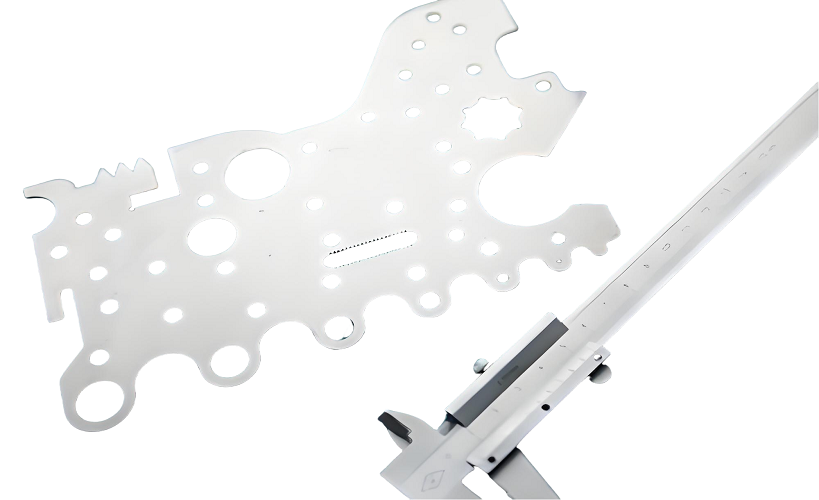
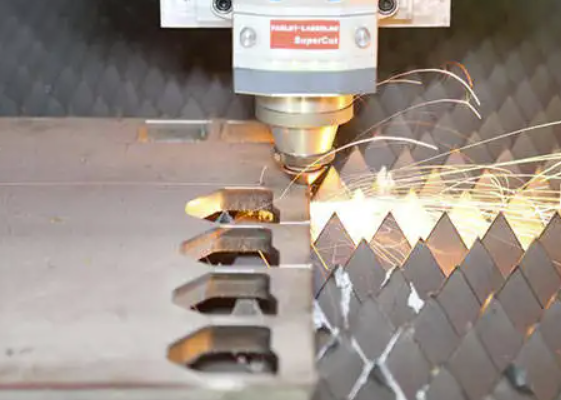
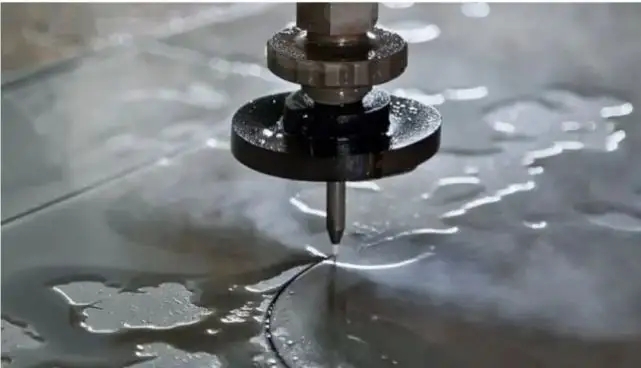
In water-jet cutting, a nozzle is used to focus a jet of water at very high pressures to cut a workpiece. For relatively soft material like rubber and wood, only water is used. A mixture of water and abrasive granular substances is used to cut harder material such as metals.
Water-jet cutting can cut material of various thicknesses. The maximum thickness that can be cut depends on the material. Of all CNC cutting methods, waterjet cutting is the most precise with tolerances between 0.05 mm and 0.1 mm. One of the reasons for its high precision is that unlike plasma and laser counterparts, waterjet cutting does not generate heat hence there is no heat affected zone in the workpiece.
Waterjet cutting is very versatile as it is used to cut hard material such as aluminum, steel, copper, stainless steel, and other metal alloys as well as softer materials like polymers, elastomers, wood, and foam.
Plasma cutters can cut through very thick material, up to 300 mm for aluminum and 200 mm for steel, with a tolerance of 0.2 mm. Other materials that are processed using plasma cutters are stainless steel, copper, and other metal alloys. Depending on the complexity of the part to be produced, 2-axis or 3-axis cutters may be used.
Although plasma cutters are not as diverse or precise as waterjet and laser cutters, they are the best choice for thick electrically conductive metal parts, as they are faster and more cost-effective for cutting such materials.
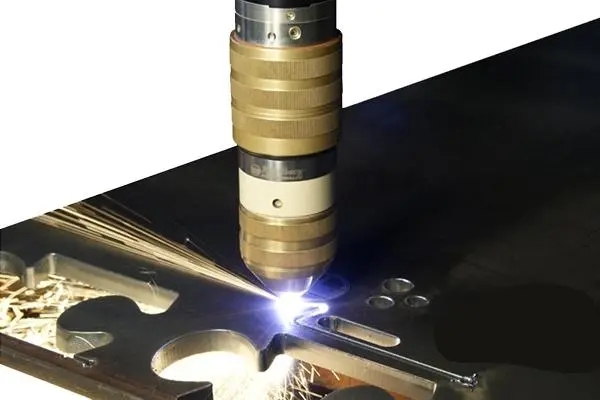
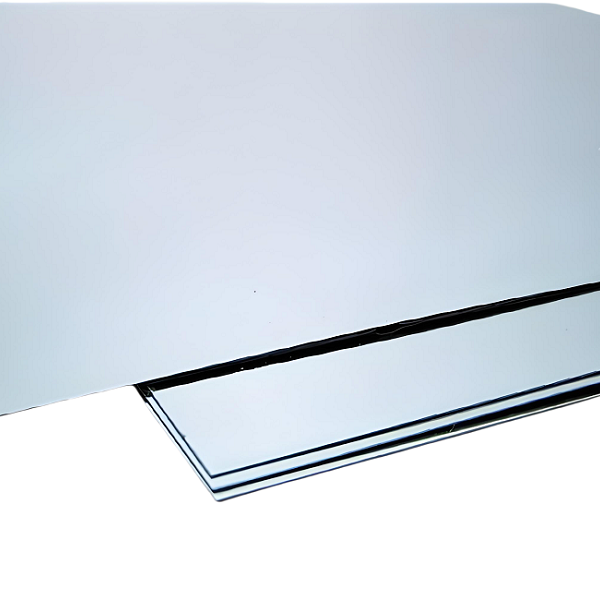
Provide Comprehensive Product Technology Solutions

